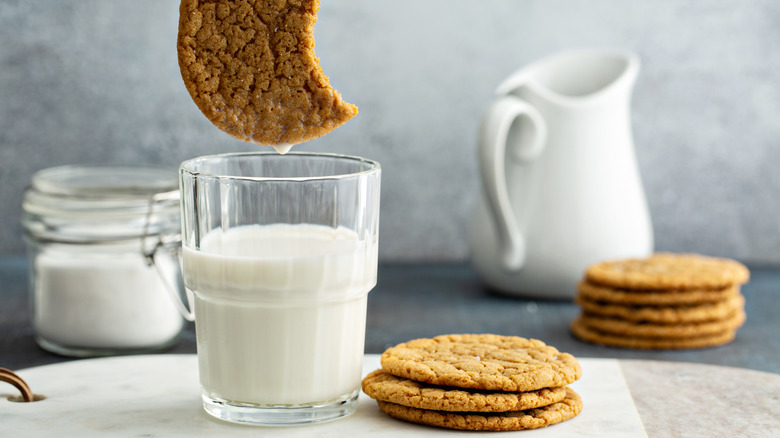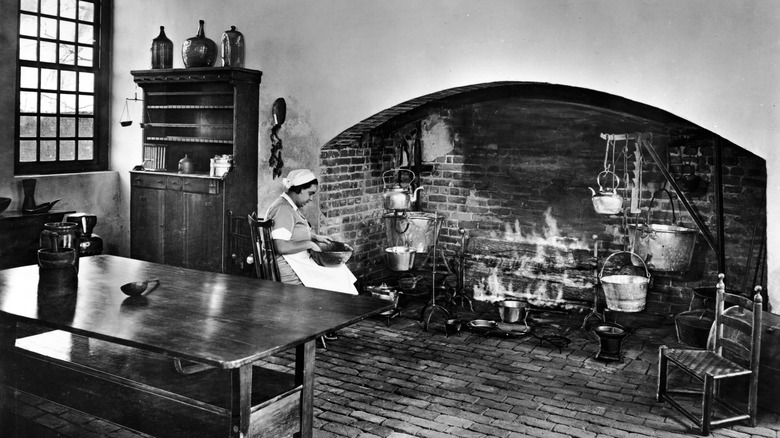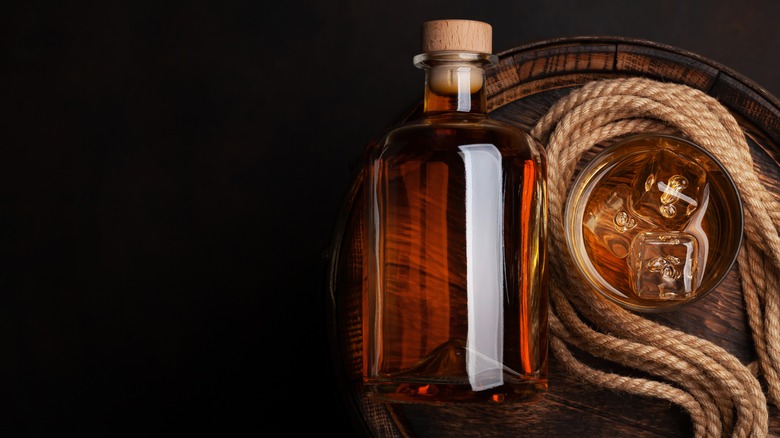Joe Froggers Is The Colonial-Era Cookie With A Touch Of Rum
A Joe Frogger may be a cookie with an amusing name, but with a long history in America, it should be taken very seriously. Originating in 1700s Massachusetts, the soft cookie is still popular along the East Coast where it can be found in cookie jars and bakery cases.
The cookie's key ingredients, molasses and rum, are representative of what was popular and available during the colonial period of America before there even were united states. Molasses was the most popular sweetener in America until the latter part of the 19th century when refined sugar prices began to drop. Likewise, rum was a popular commodity in the 13 Colonies. In fact, molasses was used by the Colonists to make rum, which they got from the West Indies. Many distilleries were even started in America to make rum, which was often viewed as safer than drinking water and was popular because of its long shelf life compared to beer and cider. In the case of Joe Frogger cookies, rum added more flavor and a little more sweetness to a cookie that people from all walks of life enjoyed.
A storied history
The cookie with an interesting name has an equally interesting history. While the exact origin of the cookie is not known for sure, it's believed that the treat was named after a free African American man named Joseph Brown. After serving in the Revolutionary War, Brown opened a tavern in Marblehead, Massachusetts, for which his wife, Lucretia, made the food. Her specialty was cookies made in an iron skillet. Why the cookies were called Joe Froggers is also unclear. One theory is that the name was inspired by how the batter spread out in the hot pan to resemble a frog and its legs. However, considering that the cookies are always made round and large (at least in modern days) the explanation that the cookies resembled the lily pads near the tavern upon which frogs liked to sit might be a more accurate story.
While Lucretia Brown may have been the first person to make a Joe Frogger, they were duplicated by home cooks throughout the area. In fact, Joe Froggers also fed many fishermen who would take barrels of the cookies on their voyages thanks to their long shelf life.
Don't forget the molasses and rum
Similar to gingerbread, Joe Froggers are made with sweet and spicy ingredients, including ground ginger, cloves, allspice, and nutmeg. When it comes to picking what kind of molasses and rum to use, go with dark for both. Dark rum will often have a bolder taste because typically it has been aged while light has not, although there are no definitive differences because of a lack of regulation. In terms of dark versus light molasses, dark molasses has been boiled twice compared to one time for light molasses. The flavor of light molasses will be sweeter and milder while dark molasses will have a slightly bitter taste and will be thicker.
While molasses adds sweetness to Joe Froggers, granulated sugar is also added to the dough and is also added when it is rolled out. Variations on the recipe call for vegetable oil instead of butter and brown sugar instead of granulated sugar.
How to make Joe Frogger cookies
There are a couple of key steps to making Joe Froggers, including mixing hot water, rum, and the dark molasses together to help them blend together. Some recipes also call for the salt to be added to the water, rum, and molasses mixture, which America's Test Kitchen says gives the cookies a light salty taste.
While Joe Froggers may have originally been made in a hot cast iron skillet, the modern baking method is in the oven. And the size of the individual cookies has gotten smaller with the passing of years. The original cookies were made in the size of a coffee can, while modern Joe Froggers are closer to 3 inches in diameter. While the original Joe Froggers may have been cooked in a hot cast iron skillet on the stove top, modern cookies are baked in the oven. Once the dough has been cut into circles, it should be placed on greased cooking sheets and cooked for about 10 to 12 minutes, or longer for larger cookies. They are done when their edges become dark and the center is firm.
All that is left to do is enjoy these classic cookies that have delighted generations of taste buds.



